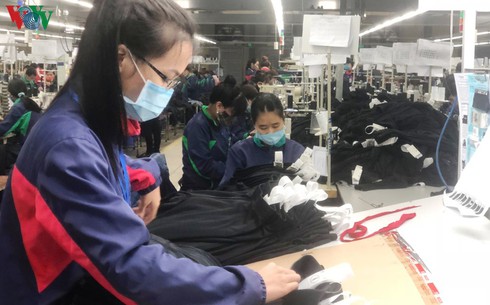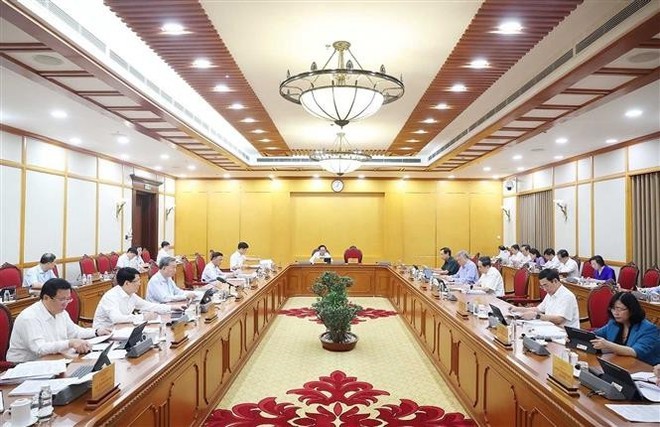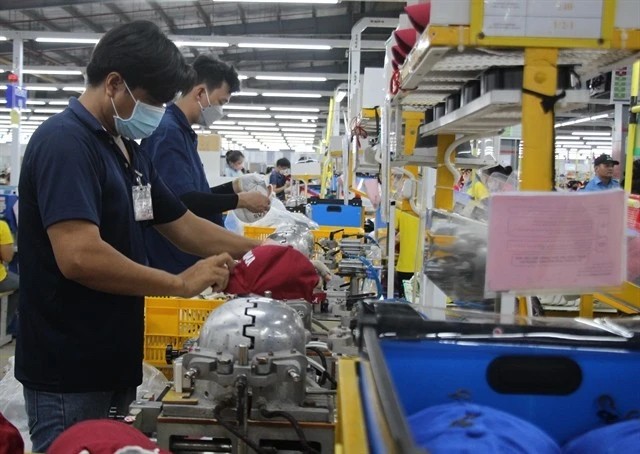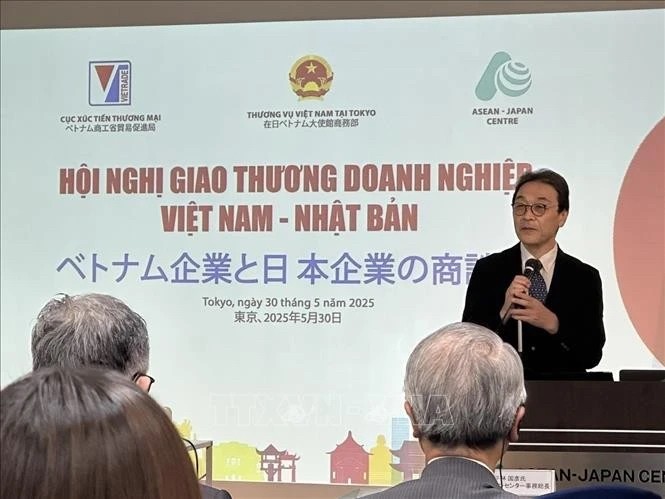Businesses set to capitalise on RCEP opportunities to bolster exports
The Regional Comprehensive Economic Partnership (RCEP) will open plenty of opportunities for Vietnamese enterprises to boost export market expansion and their deeper engagement in the global value chain once the agreement comes into effect.

Photo: VOV
The RCEP comprises of a total of 16 nations, including all 10 ASEAN member states and their six partners (Australia, China, India, Japan, the Republic of Korea, and New Zealand).
The RCEP is regarded as the world’s largest regional trade agreement as it covers a market of 47.4 per cent of the world’s population, accounts for 30 per cent of global gross domestic product, 29.1 per cent of global trade, and 32.5 per cent of global investment flows.
According to Minister of Industry and Trade Tran Tuan Anh, the RCEP is expected to create the world’s largest free trade area with the development of regional and global value chains that will contribute to spurring the economic growth of all RCEP members, including Vietnam.
RCEP signatories have pledged to open their doors to goods, services, and investments, simplify custom procedures, set up the rules of origin and remove trade barriers to enhance trade facilitation.
In particularly, amidst the rising trend of trade protectionism in the region and the world, the success of RCEP will contribute to creating a new trade structure in the region, accelerating the globalization and trade facilitation.
Minister Anh stated that in order to achieve a high-quality FTA that balances the interests of all parties involved, Vietnam has been active in discussions and made proposals in multiple fields to resolve internal issues whilst also ensuring the national interests.
Until now, RCEP negotiations have concluded several chapters including economic co-operation, small and medium-sized enterprises, customs procedures, trade facilitation, and government procurement.
These negotiations have significantly narrowed the viewpoints of nations in important fields such as the trade of goods and services, investment, and intellectual property.
With regard to the future prospects of the RECP, economists at a recent seminar titled ‘RCEP agreement – Negotiation Updates and Issues Concerned by Businesses’ said that the RCEP can be considered the world’s largest regional trade agreement with its market size being larger than that of the Comprehensive and Progressive Agreement for Trans-Pacific Partnership (CPTPP).
Countries participating in the RECP represent huge consumption markets that enjoy strong growth, while some nations have yet to set forth high requirements in terms of product quality compared to the Comprehensive and Progressive Agreement for Trans-Pacific Partnership (CPTPP) and the EU-Vietnam Free Trade Agreement (EVFTA).
The impending trade pact is expected to provide new opportunities for domestic enterprises to boost exports and expand into new markets in the fields that they hold strengths such as electronics, garment and textiles, footwear, and processed food.
Nguyen Thi Thu Trang, Director of the World Trade Organization Center and Integration under the Vietnam Chamber of Commerce and Industry, said the country’s exports are predicted to undergo slight fluctuations upon joining the RCEP, adding that the biggest advantage for Vietnam is to engage more deeply in the regional and global supply chains.
Trang also pointed out that with regard to the CPTPP, the country has faced an array of difficulties in taking full advantage of tariff incentives on garments and textiles as Vietnamese products must adhere to rules of origin whereby a certain ratio of materials from a product must originate from other CPTPP members. Currently, most of the nation’s supply sources of materials originate from China.
Meanwhile, joining the RCEP will lower the burden of import costs of input materials due to tariff incentives, unified customs procedures, and trade facilitation.
Through the signing of the RCEP, domestic businesses expect that some service markets will become more open, especially logistics and telecommunications services, in addition to having a better e -commerce platform and a more transparent and competitive business climate, she noted
Amidst concerns among businesses about the country’s competitive capacity, Trang claimed that Vietnam is expected to not suffer from high competitive pressure from the opening of market as tariff incentives will not create huge fluctuations. In fact, several of the nation’s tariff lines have been substantially reduced.
Experts have urged enterprises to improve their competitive edge, overcome shortcomings such as a lack of professionalism, inconsistent quality in their products, and inadequacies in production procedures, in order to seize the opportunities presented by the RCEP.
As the RCEP enters the final stages of negotiations, businesses are advised to improve their overall standards ahead of the implementation of the FTAs, apart from giving the earliest feedback on inadequacies to the government’s negotiation team.
If the additional feedback can be given upon the completion of the RCEP, then it will serve to bring practical benefits and reduce the negative impacts on Vietnamese businesses.
( VNF/VOV )
Recommended
 National
National
Vietnam News Today (Jun. 7): Prime Minister works with Estonian firms to accelerate projects in Vietnam
 National
National
Vietnam News Today (Jun. 6): Foreign Investment in Vietnam Surges in Five Months
 National
National
Vietnam News Today (Jun. 5): PM sets off for attendance at UNOC 3 in France, official visits to Estonia, Sweden
 National
National
Vietnam News Today (Jun. 4): Vietnam - Promising Candidate for Southeast Asia’s Next Powerhouse
Popular article
 National
National
Shangri-La Dialogue 22: Vietnam Highlights Some Issues of Ensuring Stability in a Competitive World
 National
National
Vietnam News Today (Jun. 3): PM Pham Minh Chinh to Attend UN Ocean Conference, Visit Estonia, Sweden
 National
National
Vietnam News Today (Jun. 2): Vietnamese Trade Mission Sounds Out Business Opportunities in United States
 National
National



